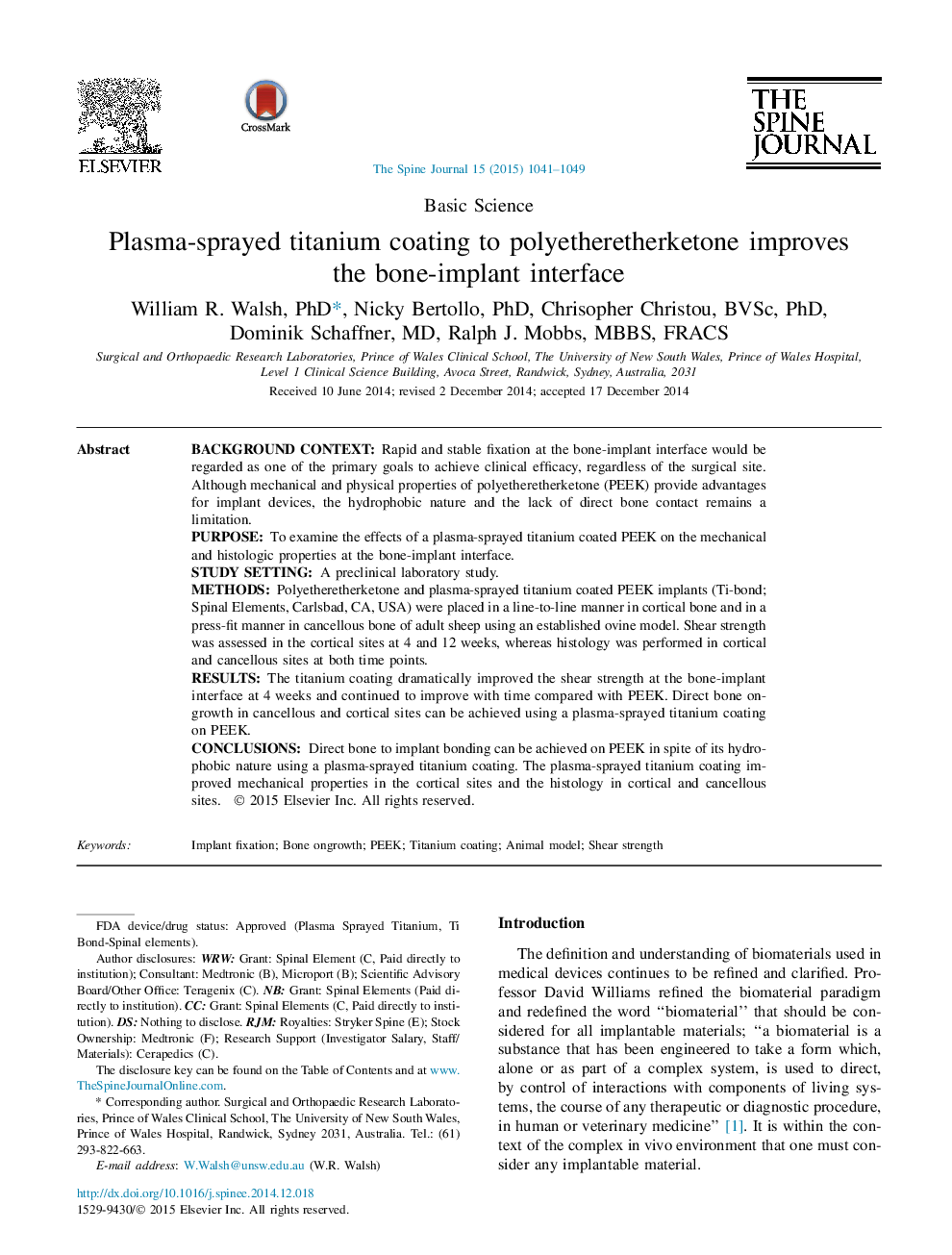| کد مقاله | کد نشریه | سال انتشار | مقاله انگلیسی | نسخه تمام متن |
|---|---|---|---|---|
| 6212047 | 1268563 | 2015 | 9 صفحه PDF | دانلود رایگان |
Background contextRapid and stable fixation at the bone-implant interface would be regarded as one of the primary goals to achieve clinical efficacy, regardless of the surgical site. Although mechanical and physical properties of polyetheretherketone (PEEK) provide advantages for implant devices, the hydrophobic nature and the lack of direct bone contact remains a limitation.PurposeTo examine the effects of a plasma-sprayed titanium coated PEEK on the mechanical and histologic properties at the bone-implant interface.Study settingA preclinical laboratory study.MethodsPolyetheretherketone and plasma-sprayed titanium coated PEEK implants (Ti-bond; Spinal Elements, Carlsbad, CA, USA) were placed in a line-to-line manner in cortical bone and in a press-fit manner in cancellous bone of adult sheep using an established ovine model. Shear strength was assessed in the cortical sites at 4 and 12 weeks, whereas histology was performed in cortical and cancellous sites at both time points.ResultsThe titanium coating dramatically improved the shear strength at the bone-implant interface at 4 weeks and continued to improve with time compared with PEEK. Direct bone ongrowth in cancellous and cortical sites can be achieved using a plasma-sprayed titanium coating on PEEK.ConclusionsDirect bone to implant bonding can be achieved on PEEK in spite of its hydrophobic nature using a plasma-sprayed titanium coating. The plasma-sprayed titanium coating improved mechanical properties in the cortical sites and the histology in cortical and cancellous sites.
Journal: The Spine Journal - Volume 15, Issue 5, 1 May 2015, Pages 1041-1049
